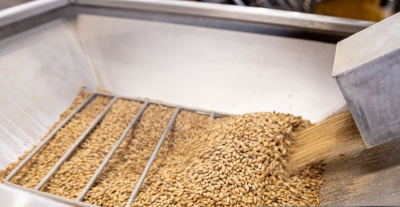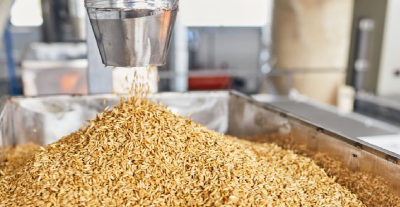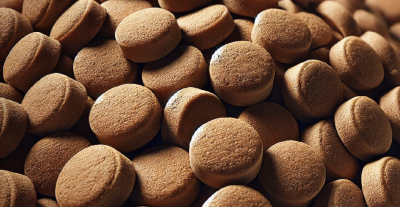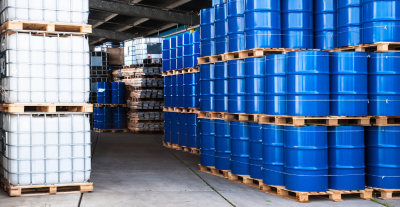
 RESCHAPE PROJECT: RESHAPING SUPPLY CHAINS FOR POSITIVE SOCIAL IMPACT
RESCHAPE PROJECT: RESHAPING SUPPLY CHAINS FOR POSITIVE SOCIAL IMPACT
 Plastic identification, verification and classification using Visum Palm™
Plastic identification, verification and classification using Visum Palm™

Analisi dei grani NIR in tempo reale

Analisi dei grani
La spettroscopia nel vicino infrarosso (NIR) è un prezioso strumento analitico per l’analisi in tempo reale della composizione chimica di un’ampia varietà di prodotti, compresi quelli di origine agricola. In questo articolo tratteremo l’applicazione della tecnologia NIR per l’analisi dei cereali e in particolare di due varietà di grano: tenero (Triticum aestivum) e duro (Triticum durum), nonché del mais giallo (Zea Mays).
Analisi dei cereali con tecnologia NIR continua o portatile
La qualità dei prodotti alimentari dipende direttamente dalla qualità delle materie prime utilizzate. Pertanto, la valutazione della loro composizione, purezza e caratteristiche fisico-chimiche è di interesse per l’industria alimentare.
Nell’analisi dei cereali, la spettroscopia NIR svolge un ruolo cruciale nel fornire informazioni dettagliate su diversi parametri simultaneamente; l’umidità è uno dei fattori critici nella valutazione della qualità dei cereali. Tuttavia, questa tecnica consente anche di analizzare altri parametri chiave come il contenuto di proteine, grassi, fibre, ceneri e amido, offrendo così un controllo più rigoroso secondo i criteri di qualità stabiliti.
La spettroscopia NIR si distingue dalle altre tecniche per la sua natura non distruttiva, il che significa che le misurazioni possono essere effettuate in modo continuo senza compromettere l’integrità del lotto o del campione in analisi. Inoltre, i risultati si ottengono in pochi secondi, semplificando l’analisi dei grani e i processi di controllo della qualità e consentendo di prendere decisioni immediate rispetto alle analisi convenzionali in chimica umida.
Di seguito verranno analizzati due modi per eseguire l’analisi NIR dei grani, sia completamente automatizzata e continua sulla linea di produzione, sia per mezzo di un analizzatore portatile, utile per l’analisi sul campo, nel magazzino di ricevimento delle materie prime o nei processi discontinui.

Analisi dei cereali in continuo e in tempo reale: chicchi di grano e mais
Per sviluppare il modello di calibrazione dei grani è stato utilizzato un analizzatore continuo Visum NIR In-Line™ (900-1700 nm) e sono stati utilizzati 30 campioni di calibrazione e 7 campioni di convalida per ogni classe. Inoltre, sono state ottenute analisi di riferimento in doppio da ciascun campione per attenuare l’errore intrinseco del metodo primario di analisi. Per l’analisi dell’umidità è stato utilizzato un misuratore termogravimetrico di umidità HE53 (Metler Toledo), le proteine sono state determinate con il metodo Kjeldahl e il contenuto di grassi con il metodo Soxhlet.
La tabella seguente mostra i principali risultati e le cifre di merito del grano tenero (TB) e del grano duro (TD) per i parametri umidità e proteine espressi in % di sostanza secca. Inoltre, sono riportati anche i risultati relativi al grasso e all’umidità del mais giallo. È importante chiarire che la stessa calibrazione è utile e raggruppa entrambe le classi di grano in un’unica famiglia o metodo di analisi. Non sono state osservate differenze spettrali significative per i singoli trattamenti.

* Tabella 1: Analisi di grano tenero, grano duro e mais giallo. Principali cifre di merito ottenute con l’ analizzatore continuoVisum NIR In-Line™.
L’analisi dei cereali con la spettroscopia NIR è importante anche nella produzione di mangimi per ottimizzare le diete e la resa. Nel settore agroalimentare, la tecnica NIR offre numerosi vantaggi rispetto ai metodi di chimica umida, soprattutto grazie all’immediatezza del risultato e alla possibilità di prendere decisioni tecnologiche in loco, tanto più se si considera l’introduzione di questi sistemi come l’analizzatore Visum NIR In-Line™ nelle linee di produzione che consentono un monitoraggio continuo dell’intero flusso di prodotto per garantire le condizioni ideali del processo e del prodotto, mitigando eventuali deviazioni con conseguenze fitosanitarie che possono compromettere la sicurezza di un intero lotto, per quanto riguarda l’umidità.
Un'alternativa NIR portatile per l'analisi dei cereali
In molte occasioni, soprattutto a causa delle condizioni e dell’ambiente in cui deve essere eseguita l’analisi dei cereali, può essere di grande utilità lavorare con un analizzatore di cereali NIR portatile come il Visum Palm™. Questo dispositivo, che opera nello stesso intervallo spettrale (900-1700 nm) dell’analizzatore continuo che abbiamo visto in precedenza, è in grado di determinare in meno di 3 secondi diversi parametri di interesse in tutti i tipi di grani, cereali e semi oleosi.
Alcuni dei suoi principali vantaggi, soprattutto per l’analisi dei cereali in campo, sono:
- È un analizzatore autonomo (computer incorporato e touch screen). Non ha bisogno di essere collegato a nessun dispositivo esterno, tablet o smartphone per funzionare.
- Ha un’area di misurazione del campione di 10 mm di diametro e un’illuminazione di 50 mm di diametro, che consente di attenuare le eterogeneità presenti e di ottenere più informazioni chimiche da ciascun campione.
- A differenza della maggior parte degli analizzatori di grani NIR portatili presenti oggi sul mercato, ha una risoluzione spettrale di 3 nm o 256 pixel, cioè due o tre volte superiore, che consente di ottenere spettri, e quindi risultati, di elevata affidabilità e qualità.
- Include librerie di fabbrica per diversi tipi di grana.
- È supportato dal software esterno Visum Master™ per PC, in modo che l’utente finale possa sviluppare le proprie calibrazioni NIR ed estenderle in modo automatizzato e assistito dall’intelligenza artificiale. In questo modo, l’utente non dipende da librerie di terze parti e ha piena autonomia per rafforzare ed estendere le proprie calibrazioni per nuovi parametri o prodotti in base alle proprie esigenze attuali o future.
Ci auguriamo che questo articolo sull’analisi dei cereali con la tecnologia NIR vi sia stato utile. Per ulteriori informazioni, vi invitiamo a contattarci via e-mail all’indirizzo info@iris-eng.com.



